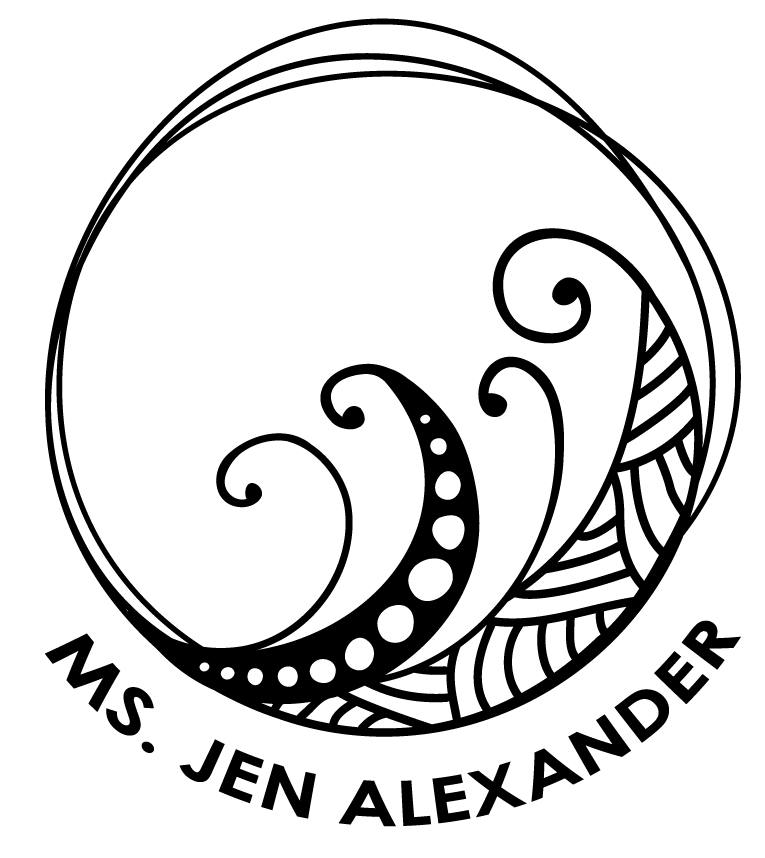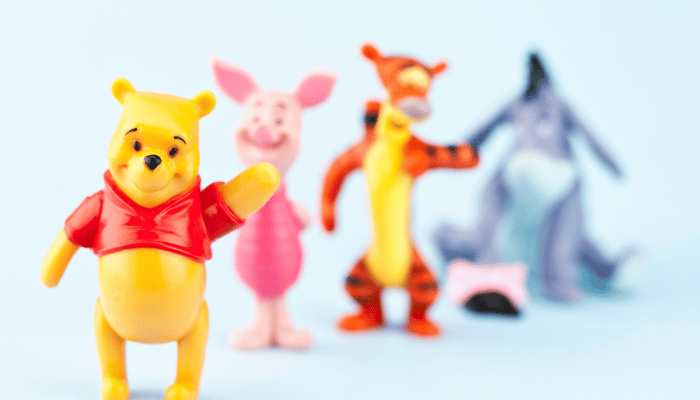Winnie the Pooh and friends offer lifelong lessons on topics of all kinds. Here I connect the characters to the process of reflective supervision. Whether you’re an administrator, consultant, educational coach, lead teacher, mentor educator, or early childhood supervisor, here are some tips to ensure your reflective supervision is trauma-sensitive. They’re all linked to Pooh and friends!
Reflective supervision, as influenced by Heller & Gilkerson (2009), is a collaborative relationship that meets in a predictable way to support the supervisee’s professional growth. In education, it’s a seasoned educator partnering with someone who has less experience whether that supervisor is an actual manager or not. Trauma-sensitive reflective supervision is aimed at supporting the mentee’s growth in relation to trauma-sensitive educational practices. It’s not focused on thoughts and feelings related to one’s personal life like therapy. Rather, it’s marked by discussions that improve professional skills. I like to think of reflective supervision as a relationship where the leader is a bit like both Winnie the Pooh and wise owl! Pooh offers a loyal, honest companion who is approachable and there for the other in caring, genuine ways. On the other hand, Pooh can be naive, and leaders in reflective supervision need to hold space for how hard working in education can be. That’s where the wise owl comes in. With sound experience and the wisdom that comes with it, trauma-sensitive mentors must trust themselves to lead, especially by example—less so by advice—though the owl in the cartoon overthinks everything and often goes overboard with advice.
"I like to think of reflective supervision as a relationship where the leader is a bit like both Winnie the Pooh and wise owl!"
Ms. Jen Tweet
Trauma-Sensitive Qualities of Reflective Supervision
Trauma-sensitive reflective supervision must center safety, connection, regulation, and learning both within the supervisory relationship and in its overarching goals to support all learners. As such, it’s marked by the following qualities.
It must be safe and feel safe. Whether the reflective supervision is in a group or 1:1, all parties need to create enough safety together to show up authentically. Questions like, “Can I be myself?” And, “Is it safe to be honest about the challenges I face?” are at the heart of any human’s growth. Imagining the mentee like Piglet is a must—smaller in terms of their amount of experience but generous and good—as are our students.
The mentee must be fully accepted no matter what—even if their supervisor is also their manager who is responsible for setting boundaries or evaluating them. Saying, “I always care about you no matter what even if I need to address a concern with you,” matters. Just like Kanga would do with Roo and we must do with youth!
The group or dyad interacts within a regulating rhythm of nurture and challenge, whereby the work can speed up like Tigger or slow down like Eeyore, in response to the supervisee’s fluctuating needs. Asking direct questions can be important. Such as, “Are you more in need of support or problem solving today?” This experience can serve as a model for the attuned relationships every educator must establish in their relationships with learners and their families.
These qualities create the foundation from which skills like observation, suggesting options for new next steps, and reflecting together within caring, confidential conversations can influence trauma-sensitive growth. Like Rabbit, it’s all about skilled action for leaders, educators, their students, and families.
Which I guess leaves me to be your Christopher Robin of sorts—sharing in these adventures with you and supporting you when you need it too. 🙂
Reflective Supervision Phases
There are different phases to reflective supervision, and I teach mine in accordance with being a trained Adlerian mental health clinician. In short, this means I advocate for moving from a less directive to a more directive approach. Still, a back-and-forth among the phases is always necessary; growth is never linear. If you lean more directive, you might emphasize the later phases, and if you’re more non-directive, you may not go past the earlier phases. Personally, I value and recommend them all!
Here are the general phases, and each is presented with three specific suggestions to support your implementation.
Phase 1: Build a caring supportive relationship.
Get to know your mentee as a person and let them know you too! How? Start with one of these three ideas.
- Chit chat together about who you are, your people, and things you love. Ask and tell proportionately!
- Share and talk about personal photos.
- Offer to help or join them in their classroom and vice versa.
You may be thinking, “But isn’t my goal to help them grow and change?” Answer? Yes, and… You must know them professionally before you move in that direction. These three communication skills will help you.
- Ask open ended questions, meaning ones that can’t be answered with a one-word answer (e.g., “What shall we focus on?” “What’s going well?” “Challenging?” “An example of that is…”). Then wait for them to reply—you may need to wait longer than is comfortable for you.
- Listen for what’s said and what’s not said, especially for feelings (e.g., “What’s that like for you?” “How do you feel?” “Is there anything else you notice?”).
- Slow things down to promote shared understanding—paraphrase and summarize (e.g., “It seems like…” “You’re saying that…” “Did I get that right?” “What am I missing?”).
Phase 3: Help them understand themselves by simultaneously holding your own perspective and theirs too.
Hint: You’re still not focused on change. Not yet! Try these actions.
- Invite observation re: what’s on the outside in the situation and what’s going on inside them too (e.g., “Let’s explore your strengths;” “What did you notice outside of yourself in this situation?” “What’d you notice inside yourself?” “Has this come up before?”).
- Look for patterns, and share how their approach may be different from others’ (e.g., “I’ve noticed a pattern; when ___ happens, you tend to ___;” “Other folks may ___ instead;” “It’s something to reflect on”).
- Work toward shared goals so that your approach is empowering, not disempowering (e.g., “Is that something you’d like to work on?” “Is there another goal you prefer for now?” “What do you need?” “How can I help?”).
- Offer suggestions (e.g., “Here’s what tends to work for me/others;” “Want to try it?” “Let’s practice;” “Do you need a reminder card to help you?”).
- Reflect and troubleshoot together (e.g., “What did you try?” “How did it go?” “I wonder if it would help to…” “Thoughts on next time?”).
- Celebrate successes (e.g., “You worked on ___, and it’s leading to ___;” “I’m proud of you; are you proud of yourself?” “What’s next?”)!
Applying the Phases of Reflective Supervision to the Cartoon
Now let’s apply the phases of trauma-sensitive reflective supervision to an episode of Winnie the Pooh.
First, watch this short where Pooh and friends carry out a plan to obtain a jar full of honey—only it doesn’t quite go as they hoped. I’ll pretend that I’m supervising Pooh. We’ll reflect on the encounter in our dialogue. I’ll label my responses with the skills I detailed above.
Me: Hi Pooh, where shall we start today? [Phase 1: Chit chat + open ended question]
Pooh: Well, I’m a little sticky from a honey adventure that didn’t quite turn out as planned!
Me: I know how much you love your honey, Pooh [Phase 1: Chit chat re: one of Pooh’s loves]
Pooh: I do, I do, but well, ummm, I didn’t get the honey!
Me: Oh no, what happened, Pooh? [Phase 2: Open ended question]
Pooh: Well, we had an elaborate plan to trick the bees only it made them mad, the honey spilled, and we didn’t get the honey.
Me: That sounds frustrating! You had a plan, but you’re saying that it didn’t turn out like you hoped. [Phase 2: Listening for feelings + paraphrase]
Pooh: Yes, we tricked the bees into putting their honey in a new hive, which worked, but we didn’t realize the bees would be angry about it and come after us. To escape, we had to leave the honey behind.
Me: I see, your planning was successful to some extent, but you fell short because you didn’t think ahead about how your actions might impact the bees. [Phase 2: Summary]
Pooh: Uh-huh
Me: You know, Pooh, I’ve seen this come up for you before. You may think about what you want and devise a plan, but sometimes you carry that out in a way that’s *to* others instead of *with* them. What are your thoughts on that? [Phase 3: Looking for patterns and sharing about it]
Pooh: Hmmmm, carrying things out in a way that’s *to* instead of *with*… I’m not sure what you mean?
Me: Well, the bees didn’t have any say in your plan, and they didn’t like what you did once it was unfolding either. Some folks in the same situation might think about how to partner with the bees in the planning stage so they have input too. Is that something you might want to work on with me? [Phase 3: Working toward a shared goal]
Pooh: Sure, the bees matter to me. They’re living bee-ings, and besides, I love their honey. I’d like to learn how to work with them instead of trying to trick them.
Me: Good plan; let’s focus on that next time. For now, I might start by sending the bees a message, letting them know I’m sorry for upsetting them so much today. I’d express that I value them and wish to work with them instead of against them in the future. [Phase 4: Offering a suggestion]
Pooh: Good idea, I will do that, thank you!
In this dialogue, I went into all four phases. That doesn’t always happen in one reflective supervision session. You might spend an entire meeting or even more than one in one of the phases before moving forward. And, it will need to go back-and-forth between the phases sometimes too.
Trust the process!
To Learn More...
- Countertransference, which is a concept psychotherapists, counselors, and other mental health professionals receive training about, is a topic that relates to reflective supervision. Alex Venet recently wrote a blog post over at UnconditionalLearning.org using a trauma-informed lens to help educators educators understand what countertransference is and how to address it. I encourage you to read it!
- If you’re a leader for building trauma-sensitive schools, reflective supervision is likely only one part of your role. To learn more about trauma-sensitive leadership in general, you need my new quick guide about trauma-sensitive leadership. It’s free and available for download from Brookes Publishing on my spotlight page.
- I also have a new online course and workbook available to help any school staff member become a trauma-sensitive educator. It’s called Becoming a Trauma-Sensitive Educator, and I’m thrilled to share it with you!
- Looking for free bite-sized trauma-sensitive suggestions? I’m now on TikTok. Each video is focused on one question and a brief trauma-sensitive answer to that question. Please find me over there!
Take good care,

Reference
Heller, S. & Gilkerson, L. (2009). A practical guide to reflective supervision. Zero to Three



